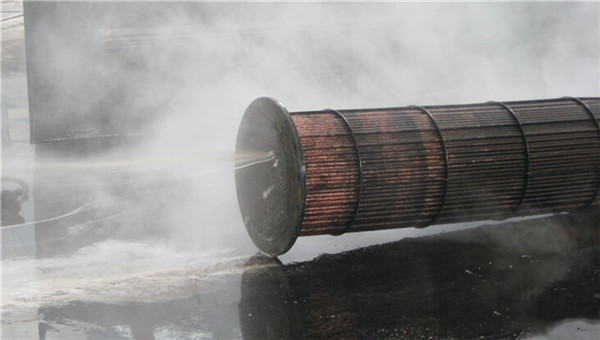Heat exchanger cleaning techniques
Dirt will form inside after the heat exchanger runs for a long time, and the accumulation of dirt will make the section of the internal channel of the heat exchanger smaller or even blocked, which will result in insufficient cooling water flow and reduced pressure, shutdown and production halt, and even the safety accidents such as blister, crack, tube burst, etc.
The following are common cleaning methods for heat exchanger:
1.Chemical cleaning
It is through the chemical cleaning liquid to produce a chemical reaction, so as to make the heat pipe surface scale of heat exchanger and other sediments dissolve, fall off or peel off.
Chemical cleaning does not require disassembling of the heat exchanger, which simplifies the cleaning process and reduces the labor of cleaning. Its disadvantage is that when the chemical cleaning fluid is not selected properly, it will corrode and damage the matrix of the cleaning material and thus causing some loss.

2.Physical cleaning
It is to use various mechanical external forces and energy to smash dirt, separate and peel off the surface of the object, thereby achieving the effect of cleaning.
Physical cleaning has the advantage of high efficiency, no corrosion, safety and environmentally friendly. Its disadvantage is that when cleaning the inside of the complex structure of the equipment, the force sometimes can not reach all parts evenly and may leave some corners uncleaned.
Common methods of physical cleaning are ultrasonic descaling, PIG pigging, electric field descaling, etc.
3.Mechanical cleaning
It is based on the mechanical action to provide a force greater than the adhesion of dirt to make the dirt fall off the heat exchange surface. This method can remove the carbonized dirt and hard scale that cannot be removed by chemical method, but it usually takes 5-6 times to clean the scale layer in the pipe, sometimes as many as 10 times, which has low pigging efficiency with poor quality.
4.Microbial cleaning
It is a method of using microorganisms to decompose the oil stains on the surface of the equipment and turn it into non-toxic and harmless water-soluble substances. This kind of cleaning completely breaks down pollutants (such as oil) and organic matters, which is a real environmental protection cleaning technology.
Both physical and chemical cleaning have their own advantages and disadvantages, but also have a good complementary. In the practical application process, they are often used together to get a better cleaning effect.
